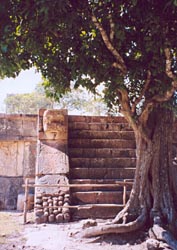
Within the largest compound of Chichen Itza, one finds architecture from the Golden Age of the Maya-Toltec culture. By roughly 800 AD, the Toltecs had arrived at Chichen Itza and become entwined with the existing culture. They brought with them their own religious iconography and architectural motifs.
The Toltecs were a significantly more warlike people, who came with armies represented by eagles and jaguars. The architecture morphed to accomodate these symbols of earth, sky and might. 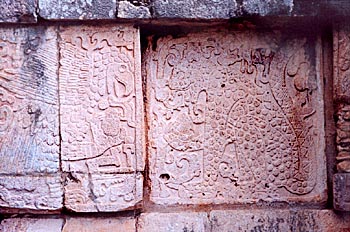
The carvings pictured above and below symbolize the Eagle Priest and the Jaguar Priest feasting on the hearts of victims of ritualized sacrifice. Generally, such victims were prisoners of war. 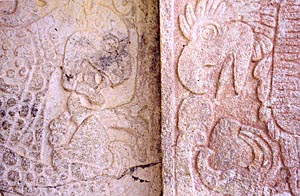
|
 |
|
|  |
El Castillo 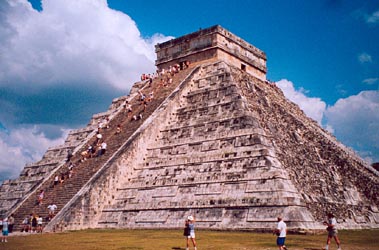
This 78 foot tall pyramid is the crowning glory of the Maya. It is, in fact, an astronomical calendar built of grey stone. Each side of the pyramid is made up of 91 steps. When you include the platform at the top as another single step, you have 365 steps. Each day of the year, the shadows fall on a different step, marking the passage of the sun. 
This solar pageantry culminates on the day of the Spring solstice, when the setting sun illuminates one step at a time in the shape of a diamond of light, leading down to the sculpted head of a serpent. The appearance is that of a snake slithering down the side of the mammoth building.
Tourists come from all over the globe to witness the spectacle at the Spring Solstice.
Below is an example of a serpent head similar to that of the one adorning the base of El Castillo. 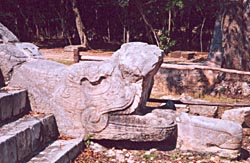
|
|
|
|


